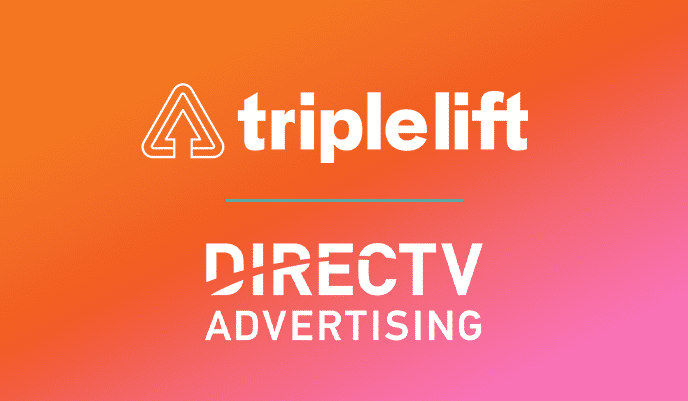Authored by: Caroline Gosnear, Product Marketing Manager
At last week’s IAB Connected Commerce Conference, we heard insights from industry leaders across retailers, agency leaders, and brands on where the retail media landscape is headed. The focus was clear: putting the customer first while driving innovation through creativity and broadening horizons for a more holistic advertising strategy.
Moving to a Consumer-First Approach
To stay consumer-first, brands must offer contextually relevant messaging at every touchpoint, whether it’s on their phone or in the store. For example, leveraging digital tools like coupons or QR codes to influence in-store shopping behavior is effective, but we will continue to see brands push to go beyond that by incorporating product reviews, ratings, and usage scenarios within offsite advertising to inform and inspire customers at the moment of purchase.
With 90% of sales still happening in brick-and-mortar stores, it is vital to meet consumers where they are at, both online and offline. The physical store is evolving into a powerful media channel, where consumers come with high intent to purchase and are open to brand engagement. However, the challenge lies in bridging the gap between digital and in-store experiences.
We also heard several times from retailers, brands, and agencies that a lot of work is still being done in silos and there is a major focus on trying to bring teams together to simplify buying strategies. At the end of the day, there is one consumer. So bringing merchant, sales, and media, teams all together to strategize yields the most powerful campaigns and outcomes.
Jenna Steele, Vice President, eCommerce and Digital at Riboli Family Wines also spoke about the importance of customer feedback not only from surveys and research but also from consumers directly. Jeriad Zoghby, Chief Commerce Strategy Officer at The Interpublic Group shared similar sentiments about how it is important to understand not only what consumers are buying but why they are buying it in order to make more meaningful recommendations and adjustments to offerings.
Creativity and Testing in an Innovative Environment
Innovation is at the heart of successful retail media strategies, and creativity is the key to standing out from the “sea of sameness.” Retail media networks are expanding opportunities to deliver unique and engaging ad experiences, both in-store and online. The focus should be on storytelling—creativity that goes beyond simple product ads and captures consumer attention with a compelling brand narrative.
In this rapidly evolving landscape, brands are succeeding when adopting a test-and-learn mindset. Kaisy O’Reilly, from Stuart Wietzman, shared that innovation budgets are still available and there is room to experiment with new placements and formats, we also heard similar insights from Kenvue on how they are exploring new executions in the phygital (physical and digital) space to thread a message across in-store and online buying platforms.
Instacart’s Suzanne Skop spoke about providing “extension of digital shelf” for their advertisers through offsite advertising. Tell your brand story and inspire consumers and convert consumers within the ad product – Gen Z is digital first and need ways to consolidate channels and tell the brand consumer and convert them within the ad. Importance of bridging online and in-store to connect channels.
Brands that embrace this approach will be better equipped to drive engagement, capture attention, and build long-term relationships. It’s about breaking through the noise with creative, relevant content that speaks directly to the consumer’s needs, wherever they may be in their shopping journey.
The Purchasing Funnel Isn’t Linear – Being Everywhere All the Time
When it comes to the purchasing funnel within retail media, we see that it is no longer linear. It is more important than ever to meet customers where they are, with messaging tailored to their immediate needs and context, to reinforce trust and enhance the shopping experience.
Amy Lanzi of Digitas shared the importance of a “surround sound” strategy, to showcase products both in-store and online, to create a cohesive and omnipresent shopping experience across channels.
There was broad alignment that the purchasing funnel is still relevant, though it has evolved to be more dynamic and interconnected. Brands must embrace a holistic media approach that engages consumers at every stage of their journey, from awareness to purchase.
We also heard cautionary tales from several speakers around ensuring you are not “data rich and insight poor.” Even when accessing vast amounts of data, brands must prioritize turning this information into actionable insights that fuel creative thinking for optimal results. By using insights to tailor messaging at each funnel stage—whether demonstrating how to use a product or providing social proof—brands can deliver personalized, contextually relevant experiences that resonate with consumers and guide them toward making a purchase. The funnel isn’t dead; it’s more integrated, requiring brands to connect with consumers across multiple channels and touchpoints.
Shifting Focus to Incrementality and Lifetime Customer Value over ROAS
While ROAS has traditionally been a key performance metric, it no longer tells the whole story. Brands are beginning to realize that incrementality and LTV are more accurate reflections of the value of their marketing efforts. Retail media is unique in that it offers insights not only into short-term sales but also into the long-term impact on consumer loyalty and engagement.
Ryan Burns from Sam’s Club, shared an example that ROAS increased 3x after 52 weeks compared to just three weeks. This longer-term view highlights the importance of seeing the consumer journey holistically and understanding the value of incremental sales. Retailers like Kroger have seen 51% fewer impressions paired with a 40% greater LTV, emphasizing the need to optimize for lifetime value rather than immediate campaign returns.
Additionally, real-time, in-flight optimization based on data from retail partners allows brands to make informed decisions and adjust their strategies on the go. This shift from short-term performance to long-term growth requires collaboration across channels and a focus on building a connected ecosystem that puts the customer at the center of everything.
The retail media landscape is rapidly evolving, and success requires brands to embrace a consumer-first approach, prioritize creative testing and learning, and shift their focus to long-term metrics like incrementality and LTV. By meeting consumers where they are, both in-store and online, and delivering contextually relevant, innovative content, brands can foster stronger relationships and drive sustained growth. The future of retail media lies in collaboration, creativity, and a commitment to serving the evolving needs of today’s customers.






